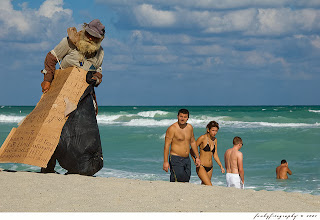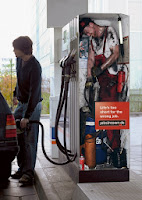What is creativity?
 |
| Joshua Hoffine creates images that reflect terrible thoughts. |
We have probably all seen
something truly odd and said, “THAT’s pretty creative!” meaning, it seems
purposeless and generally inane.
We even talk about “creative
liars,” as if such a backhanded compliment didn’t besmirch the notion of
creativity as much as it demeaned prevarication.
Creativity can in some circles be
seen as an inferior substitute for
disciplined hard work. For instance, in
finance, it is decidedly uncomplimentary to suggest someone has used “creative”
accounting.
 |
| Erik Johansson collects digital material and re-assembles it to create the image he has pre-visualized in his imagination |
Another way of viewing creativity is to see it as the result
of a great deal of disciplined hard work.
After all, in the arts as well as in more practical disciplines such as
engineering or science, creativity means to create, to make something new. At the very least, creativity involves taking
parts and putting them together in a better and more effective, more pleasing way. Very creative people actually invent new
thoughts or objects.
And let’s face it, some people are
simply more creative than others. They have more fertile
imaginations, see things differently or express themselves in a way most of us
can’t.
 |
| Kirsty Mitchell can spend weeks assembling models' costumes. See more about her art here. |
But for all of us, no matter what
degree of talent we bring to the endeavor, to be creative we must master our
art. A jazz pianist improvising sophisticated melodies and shifting through subtle harmonies has put in
thousands of hours practicing scales and arpeggios. A creative software designer making life-like
figures respond athletically in a combat game has spent endless time writing
computer code.
So a creative photographer fully
understands light and composition and the elements of design and the
capabilities of her camera as well as the aesthetic responses of people looking
at her art. Currently, in the digital
age, she probably also has real mastery of post-processing techniques.
It is one thing to have a
“creative eye,” but without sound technique it is very difficult to communicate that vision.
Creativity is not a replacement
for discipline. It is the result of
discipline.
Revisiting the Selfie:
In an earlier post, some were surprised to learn that
selfies were as old as photography itself.
I have since had time to reflect on the fact that they are certainly as old as
graphic arts. It has made me wonder about selfies in cave drawings! Here is a very famous
selfie, or as they were known in the day, “self portrait” of Vincent Van Gough. (He painted so many self portraits one wonders if he were not his own favorite subject).




























